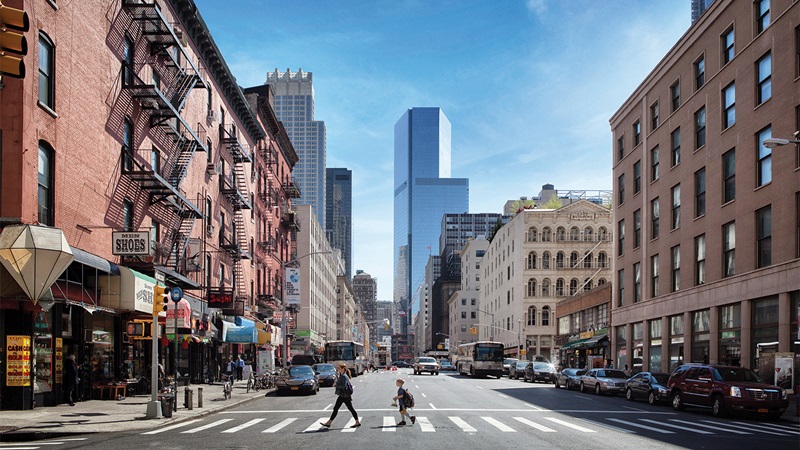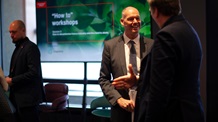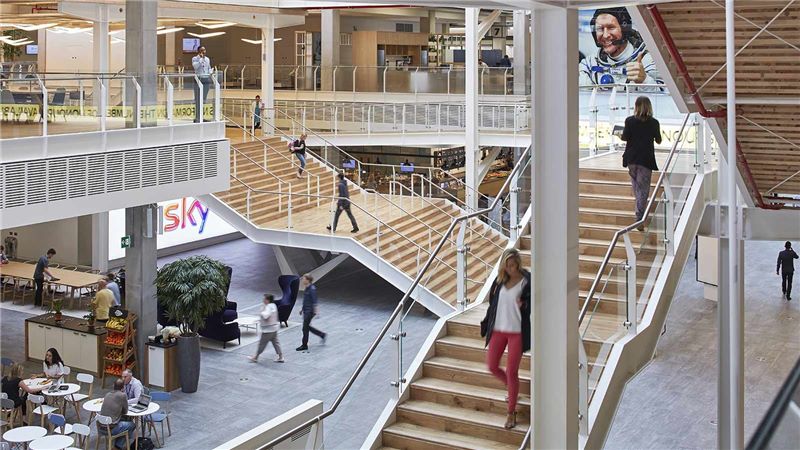Aging infrastructure vs. tall buildings
The politics of North America has been a little up in the air recently, but one area that can be relied on is the country’s construction industry with experts predicting growth in 2017.
Interestingly for the birth place of the skyscraper, this growth is unlikely to come from building higher and higher towers, in competition with the dizzying heights being currently aimed for in Asia and the Middle East.
The priority for North America is much nearer the ground and has been for a while, a 2015 survey stated that the top priority for North American construction was to rebuild aging infrastructure with a reported $2.75 trillion of investment needed by 2020, according to the American Society of Civil Engineers. And with the recent election of Donald Trump, who reportedly added infrastructure as a priority in his 100 day plan, this investment is now looking even more likely.
As something which could drive the entire industry in the next few years, it is important to know exactly what we mean by ‘aging infrastructure’. For Greg Parker, our Managing Director of Mace in North America, it’s a wide reaching term that will ultimately affect every one of our clients.
GP: Aging infrastructure covers a huge spectrum. From utilities, telecoms, airports, highways to rail. Updating it will not be an easy task by any means, and it’s something that will affect everyone from Mace to each of our clients. Not least because it will impact decisions on where to invest in real estate, along with an increased demand for skills.
It’s true that most major cities in North America are suffering from aging infrastructure and transport systems: struggling to meet current demand, or deal with the changing demographics and mobility in America’s cities. The clear priority has got to be transportation, get this right and its impact is endless from employee wellbeing, to job creation, to the ability for businesses to compete in the marketplace.
The recent election of Donald Trump could also add impetus to this. During his election he floated plans to spend $100bn immediately on infrastructure. It’s uncertain at the moment where he will start with this, but I think that given the ‘Rust Belt States’ were a huge part of his successful election, I wouldn’t be surprised if he shows a bit of favour towards Pennsylvania, Ohio, Michigan and Wisconsin. The political challenge is that plans like this will take years for the benefits to be felt by communities on the ground.
Besides paying for the updated infrastructure, the next biggest challenge facing President Trump will be the lack of resource and skills to design and develop the schemes. Major Programmes and Infrastructure makes up a large part of our UK business, and we are currently working on bringing those expertise over here, while also looking at partnering opportunities to enter the market sooner rather than later.
Putting aging infrastructure to one side, it is notable that of the people surveyed not one person felt that reclaiming the world’s tallest building status was at all important to Americans. For Greg, it all comes down to appetite.
GP: There’s no denying that North America doesn’t have the economic fluidity or the political support for the construction of projects of this nature. Gravity defying towers often focus on status and on utilising the latest advances in construction and technology, they do not focus exclusively on return on investment, and that is often where the North American appetite for construction currently lies.
But does Greg consider this lack of appetite a missed opportunity when considering Mace has built much of its reputation on building these ‘status’ projects?
There are no missed opportunities and Mace’s reputation has definitely crossed borders to North America. Don’t be misled, this region may not be interested in the race to build the tallest building in the world, but there are some very tall buildings being built here, and Mace is very much involved in the ones being delivered in New York such as the Hudson Yards project.
We are happy to translate any and all of Mace’s expertise to the North American market when the need arises, the key is to read the market. At this moment in time, our focus is on opportunities to help investors manage their risk by providing independent preconstruction services, and proactive management during construction.
Technology and collaboration are considered to be most likely to influence the construction industry in North America in the coming years. For Greg these issues go hand in hand as demonstrated by the industry’s growing use of BIM and integrated project delivery.
The impact of technology and the cyber security risk to operations are becoming two huge issues in the development of projects, not just here but throughout the world. To make sure this is addressed we have put our focus on collaborating with our clients from day one, and putting these issues on the agenda from the start. We’re now looking at technologies from a more educated place, for example Building Information Modelling. Now that the initial buzz has died down, BIM is being used from an informed place with consultants thinking carefully about when to use it and, almost as importantly, when not to use it. One thing I agree on is that technology is firmly linked to collaboration. With BIM, as with any new innovation, success is reliant on adoption by the whole team including the supply chain.
For me the thing most likely to influence the practice of construction in the coming years is simple: it’s about delivering what we promise. To do this we must align our delivery and performance with the client’s key business and project goals. Whatever the future holds, we have fantastic clients that provide potential for growth in sectors such as infrastructure and science and technology, and Mace has the global mobility to bring fresh perspectives to the North American market. So whatever the industry throws at us, ageing infrastructure, new technologies or tall buildings, we are ready.
















